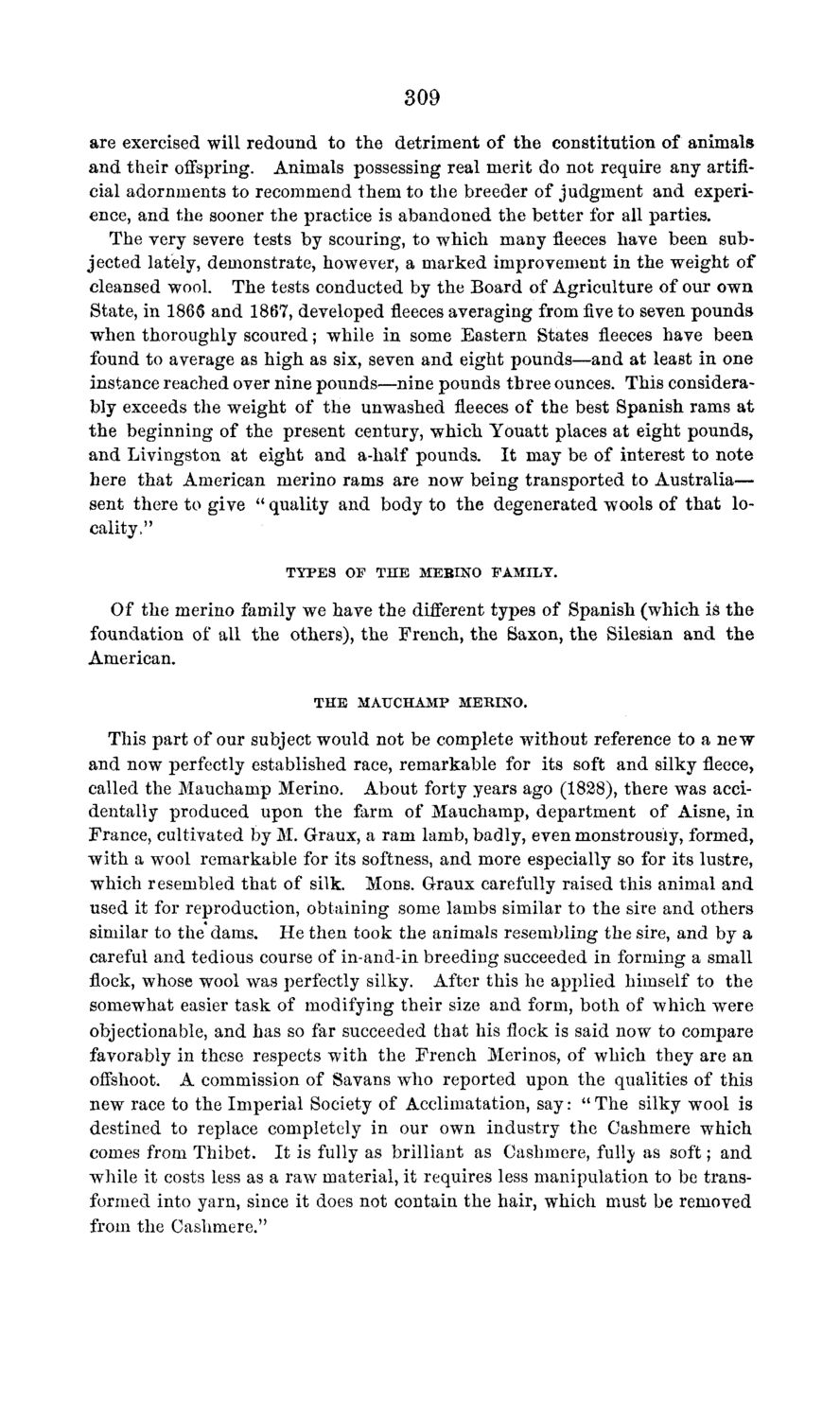| |
| |
Caption: Board of Trustees Minutes - 1869
This is a reduced-resolution page image for fast online browsing.

EXTRACTED TEXT FROM PAGE:
309 are exercised will redound to the detriment of the constitution of animals and their offspring. Animals possessing real merit do not require any artificial adornments to recommend them to the breeder of judgment and experience, and the sooner the practice is abandoned the better for all parties. The very severe tests by scouring, to which many fleeces have been subjected lately, demonstrate, however, a marked improvement in the weight of cleansed wool. The tests conducted by the Board of Agriculture of our own State, in 1866 and 1867, developed fleeces averaging from five to seven pounds when thoroughly scoured; while in some Eastern States fleeces have been found to average as high as six, seven and eight pounds—and at least in one instance reached over nine pounds—nine pounds three ounces. This considerably exceeds the weight of the unwashed fleeces of the best Spanish rams at the beginning of the present century, which Youatt places at eight pounds, and Livingston at eight and a-half pounds. It may be of interest to note here that American merino rams are now being transported to Australia— sent there to give " quality and body to the degenerated wools of that locality," TYPES OF THE MEBINO FAMILY. Of the merino family we have the different types of Spanish (which is the foundation of all the others), the French, the Saxon, the Silesian and the American. THE MAUCHAMP MERINO. This part of our subject would not be complete without reference to a new and now perfectly established race, remarkable for its soft and silky fleece, called the Mauchamp Merino. About forty years ago (1828), there was accidentally produced upon the farm of Mauchamp, department of Aisne, in France, cultivated by M. Graux, a ram lamb, badly, even monstrously, formed, with a wool remarkable for its softness, and more especially so for its lustre, which resembled that of silk. Mons. Graux carefully raised this animal and used it for reproduction, obtaining some lambs similar to the sire and others similar to the dams. He then took the animals resembling the sire, and by a careful and tedious course of in-and-in breeding succeeded in forming a small flock, whose wool was perfectly silky. After this he applied himself to the somewhat easier task of modifying their size and form, both of which were objectionable, and has so far succeeded that his flock is said now to compare favorably in these respects with the French Merinos, of which they are an offshoot. A commission of Savans who reported upon the qualities of this new race to the Imperial Society of Acclimatation, say: " The silky wool is destined to replace completely in our own industry the Cashmere which comes from Thibet. It is fully as brilliant as Cashmere, fulty as soft; and while it costs less as a raw material, it requires less manipulation to be transformed into yarn, since it does not contain the hair, which must be removed from the Cashmere."
| |